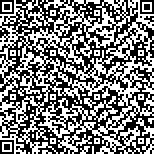| This Paper:Browse 1981 Download 446 |

码上扫一扫! |
|
| JingYAN,XinpingGUAN,XiaoyuanLUO,FuxiaoTAN |
|
|
| (Institute of Electrical Engineering, Yanshan University;Institute of Electrical Engineering, Yanshan University;School of Electronic and Electric Engineering, Shanghai Jiao Tong University;School of Computer and Information, Fuyang Teachers College) |
|
| 摘要: |
|
| 关键词: |
| DOI: |
| Received:September 02, 2009Revised:December 21, 2010 |
| 基金项目:This work was supported by the National Basic Research Program of China (973 Program) (No. 2010CB731800), the Key Program of National Natural Science Foundation of China (No. 60934003), the National Natural Science Foundation of China (No. 61074065, 60974018), the Key Project for Natural Science Research of Hebei Education Department (No. ZD200908), and Key Project for Shanghai Committee of Science and Technology (No. 08511501600). |
|
| Formation and obstacle avoidance control for multiagent systems |
| Jing YAN,Xinping GUAN,Xiaoyuan LUO,Fuxiao TAN |
| (Institute of Electrical Engineering, Yanshan University;Institute of Electrical Engineering, Yanshan University;School of Electronic and Electric Engineering, Shanghai Jiao Tong University;School of Computer and Information, Fuyang Teachers College) |
| Abstract: |
| This paper considers the problems of formation and obstacle avoidance for multiagent systems. The objective is to design a term of agents that can reach a desired formation while avoiding collision with obstacles. To reduce the amount of information interaction between agents and target, we adopt the leader-follower formation strategy. By using the receding horizon control (RHC), an optimal problem is formulated in terms of cost minimization under constraints. Information on obstacles is incorporated online as sensed in a limited sensing range. The communication requirements between agents are that the followers should obtain the previous optimal control trajectory of the leader to each update time. The stability is guaranteed by adding a terminal-state penalty to the cost function and a terminal-state region to optimal problem. Finally, simulation studies are provided to verify the effectiveness of the proposed approach. |
| Key words: Multiagent systems Formation Obstacle avoidance Receding horizon control (RHC) |

